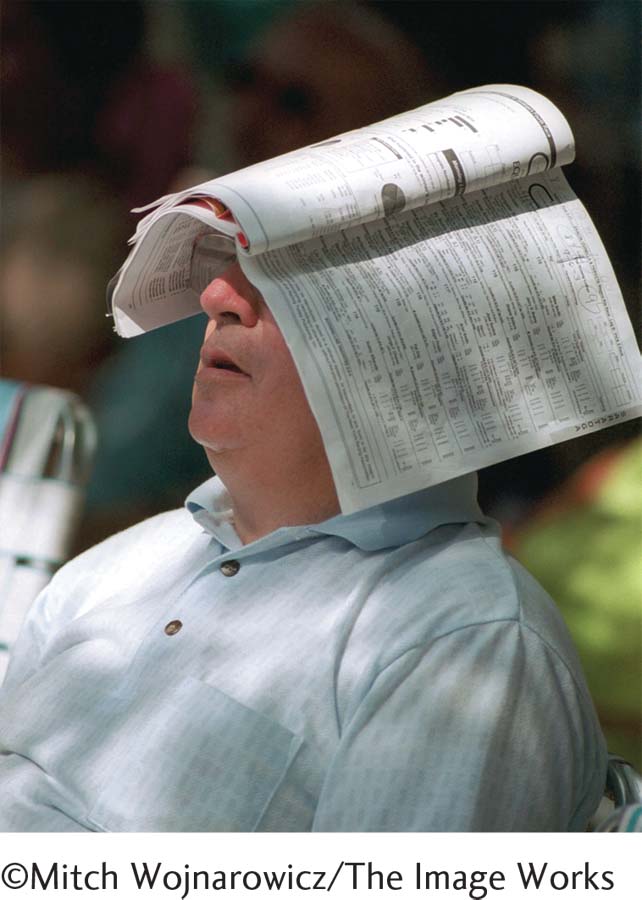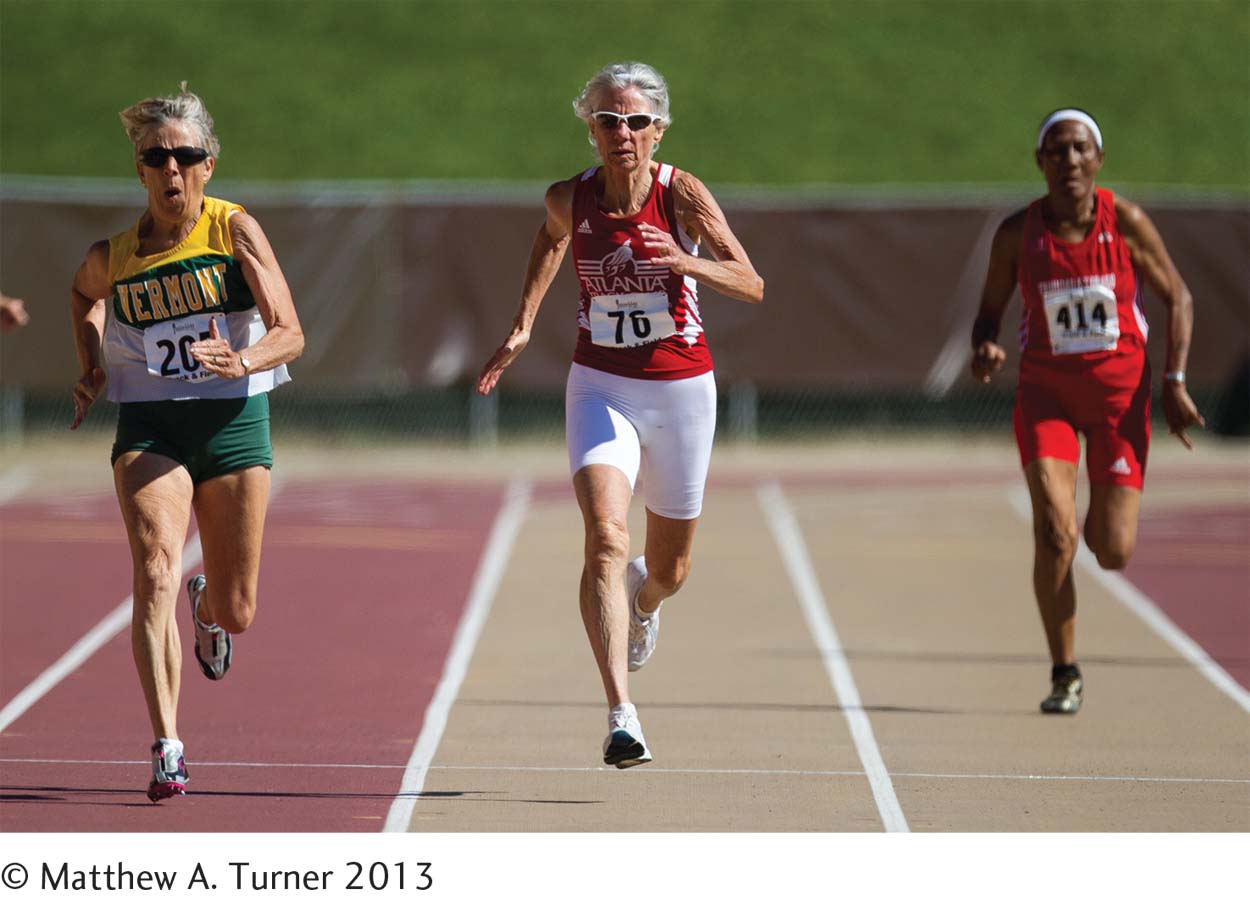15.4 Substance Misuse in Later Life
Although alcohol use disorder and other substance use disorders are significant problems for many older persons, the prevalence of such patterns actually appears to decline after age 65, perhaps because of declining health or reduced income (Thompson, 2015). The majority of older adults do not misuse alcohol or other substances, despite the fact that aging can sometimes be a time of considerable stress and in our society people often turn to alcohol and drugs during times of stress. Accurate data about the rate of substance abuse among older adults are difficult to gather because many elderly people do not suspect or admit that they have such a problem.
Page 506

Racing to mental health Gerontologists propose that elderly people need to pursue pleasurable and personally meaningful activities. The elderly women on the left compete in a race at the 2013 National Senior Games in Ohio. In contrast, the elderly gentleman on the right, also interested in racing, watches a competition at the Saratoga Springs horse racing track with the daily racing form on his head. Which of these two activities might be more likely to contribute to successful psychological functioning during old age?

Surveys find that 3 to 7 percent of older people, particularly men, have alcohol use disorder in a given year (Trevisan, 2014). Men under 30 are four times as likely as men over 60 to display a behavioral problem associated with excessive alcohol use, such as repeated falling, spells of dizziness or blacking out, secretive drinking, or social withdrawal. Older patients who are institutionalized, however, do display high rates of problem drinking. For example, alcohol problems among older people admitted to general and mental hospitals range from 15 percent to 49 percent, and estimates of alcohol-related problems among patients in nursing homes range from 10 percent to 20 percent (McConnaughey, 2014; Klein & Jess, 2002).
Researchers often distinguish between older problem drinkers who have had alcohol use disorder for many years, perhaps since their 20s, and those who do not start abusing alcohol until their 50s or 60s (in what is sometimes called “late-onset alcoholism”) (Thompson, 2015; Volfson & Oslin, 2011). The latter group typically begins abusive drinking as a reaction to the negative events and pressures of growing older, such as the death of a spouse, living alone, or unwanted retirement. Alcohol use disorder in elderly people is treated much as it is in younger adults (see Chapter 10): through such interventions as detoxification, Antabuse, Alcoholics Anonymous (AA), and cognitive-behavioral therapy (APA, 2014).
Medications for the Elderly
| 70% |
Percentage of elderly persons who take cardiovascular drugs |
| 47% |
Percentage of elderly persons who take cholesterol-lowering drugs |
| 18% |
Percentage of elderly persons who take diabetes drugs |
| 14% |
Percentage of elderly persons who take antidepressant drugs |
(Information from: NCHS, 2014)
A leading substance problem in the elderly is the misuse of prescription drugs (NIH, 2014). Most often the misuse is unintentional. In the United States, people over the age of 50 buy 77 percent of all prescription drugs and 61 percent of all over-the-counter drugs (NCHS, 2014; Statistic Brain, 2014). Elderly people—those who are over 65 years of age—receive twice as many prescriptions as younger persons (Dubovsky & Dubovsky, 2011). Around half take at least five prescription drugs and two over-the-counter drugs (NCHS, 2014). Thus their risk of confusing medications or skipping doses is high. To help address this problem, physicians and pharmacists often try to simplify medications, educate older patients about their prescriptions, clarify directions, and teach them to watch for undesired effects. However, physicians themselves are sometimes to blame in cases of prescription drug misuse, perhaps overprescribing medications for elderly patients or unwisely mixing certain medicines (Metsälä & Vaherkoski, 2014).
Page 508
What changes in medical practice, patient education, or family interactions might reduce prescription drug misuse by the elderly?
Yet another drug-related problem, apparently on the increase, is the misuse of powerful medications at nursing homes. Research suggests that antipsychotic drugs are currently being given to almost 30 percent of the total nursing home population in the United States, despite the fact that many of the residents do not display psychotic functioning (Mort et al., 2014; Lagnado, 2007). Apparently, these powerful and (for some elderly patients) dangerous drugs are often given to sedate and manage the patients.

